iPhone 5 Review [VIDEO]
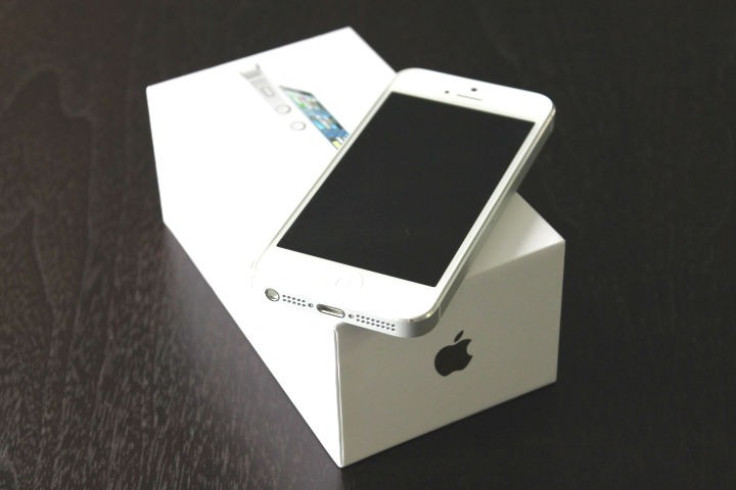
Key Features:
- 4in IPS Display (640 x 1136)
- A6 chip with 1GB RAM
- iOS 6
- 7.6mm thick; weighs 112g
- 8 megapixel camera
- Lightning connector
- 4G LTE
- Price as reviewed: £529 (16GB, SIM-free)
iPhone 5: Introduction
The launch of a new iPhone is usually greeted with the kind of mass hysteria reserved for the arrival of a deity - or, more recently, a new haircut from Justin Beiber. The iPhone 5 has been no different, except for the first time, we pretty much knew what was coming, a long time before Tim Cook unveiled the new phone earlier this month.
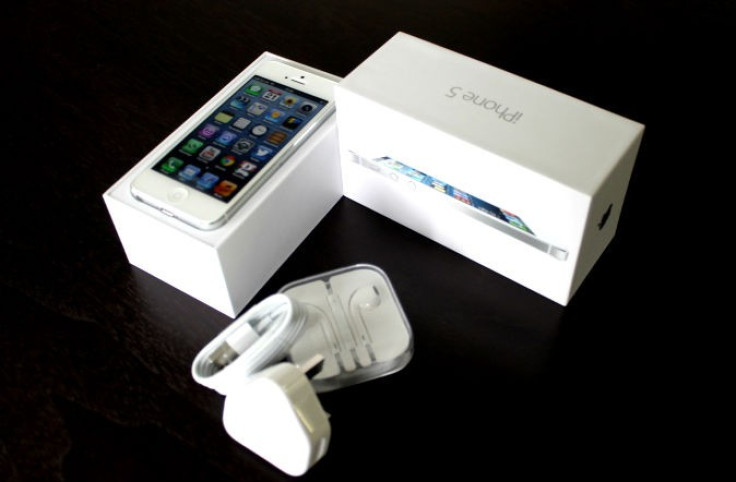
The initial reaction was more "meh" than "wow", but two million pre-orders in just 24 hours and round-the-block queuing ahead of it going on sale last Friday, highlights that Apple hasn't lost any of its appeal.
In it's now obligatory promotional video to accompany the launch of a new device, Apple's head of design Jony Ive called the iPhone "probably the object you use most in your life." Getting past the hyperbole, he's probably right. Therefore for millions of people, changing the iPhone is a huge deal.
The iPhone 5 keeps the design aesthetic we saw introduced with the iPhone 4 and continued with the iPhone 4S, but with some significant changes including a larger screen and 4G support.
Does it retain its crown as the world's best and most popular smartphone? Let's find out:
iPhone 5: Design and feel
Despite the iPhone being over five years old, no other manufacturer has been able to compete with Apple in terms of design and feel.
Nokia is the company which has probably come closest. Ironically the rarely-seen N9 was their most complete smartphone but was launched in only a handful of countries and ran the MeeGo operating system - which Nokia summarily ditched just before launching the phone.
While the iPhone 5 may look a lot like the iPhone 4 and 4S, it feels completely different. Apple has reduced the weight by 20 percent - mainly thanks to the removal of the glass panel on the rear - and this is the first thing you notice about the new iPhone when you pick it up.
Unlike some smartphones, the lightness does not make it feel insubstantial. It feels solid; premium and there is no sense that it will bend or break from minor drops or scrapes.
The next thing you notice is the thinness. At 7.6mm, it is significantly thinner than the iPhone 4S. Managing to reduce the overall thinness of the phone while maintaining (and adding to) the phone's features is a remarkable feat of engineering excellence.
Apple has retained the overall rectangular look of the iPhone 4S, with rounded corners, a fully-flat design. However a closer look highlights a number of important changes.

The main difference is that the iPhone 5 is 8.6mm taller, thanks to the larger 4in screen, but retains the same width. Turn the phone over and you'll see the glass plate has been replaced by a dual-coloured, anodized aluminium finish.
The top and bottom of the rear plate are finished in glossy black or white, with an a lightly-textured, matte inlay in-between - which is slate grey (on the black version) or silver (on the white version).
Aside from this inlay, the rest of the phone is machined from a single piece of lightweight aluminium, including the sides.
Other changes include the introduction of the smaller 9-pin Lightning dock connector, the placement of the headphone jack on the bottom rather than the top and a slightly redesigned Home button below the screen.

There is also a shiny bevelled edge around the sides of the iPhone 5, which give the phone a softer, less harsh feel when in the hand.
Build quality is, as we have come to expect from Apple, almost flawless. We saw almost, becasue at the top of the inlaid back there is a slight rattle when we tap it, and this is present on two seperate iPhone 5s we looked.
Overall, the iPhone 5 is simply the best designed smartphone on the market. It's slimmed-down and lighter body could easily have made it feel flimpsy and cheap, but the use of materials like glass and aluminium mean the iPhone 5 has lost none of the premium feel of its predecessors.
iPhone 5: Display
The 3.5in screen has long been a source of scorn from supporters of the Android platform. This year we have seen flagship Android devices from the likes of Samsung, HTC and LG launch with screens of 4.7in or bigger, and Samsung's Galaxy Note 2 will certainly blur the smartphone/tablet boundaries with it's 5.5in screen.

Boosting the screen size on the iPhone 5 was almost inevitable, though Apple has resisted the temptation of competing with the Android flagship devices, going for a more subtle 0.5in increase in screen size.
More importantly however, because it has increased the height but not the width of the screen, Apple has changed the aspect ratio from 4:3 t0 16:9. This means watching videos and viewing photos in landscape mode is a much better experience.
The decision not to increase the width of the screen was taken, according to Apple, to allow users to continue to be able to type and navigate single-handed. And it works, while there is a lot more information onscreen, one-handed typing and navigation is still perfectly possible, and even reaching the power button on top can be done with one hand.
The bigger screen also allows for five rows of icons to be displayed on all home screens (as well as the static app on the bottom of the screen) and, in apps which have been optimised for the bigger screen, more information is shown on screen.
All of Apple's core apps, like email, messaging, weather and the Safari browser make use of the extra screen space already, but a lot of third-party apps such as BBC iPlayer, Instagram, Skype and Gmail have not been updated yet, with a black banner placed above and below the app instead.
It's inevitable that almost all apps will update to make use of he bigger screen, with some, like Twitter and Facebook, already having done so.
As well as increasing the physical size of the screen, Apple has also increased the resolution from 640 x 960 to 640 x 1136, giving it a pixel density of 326ppi (slightly down from 330ppi on the iPhone 4S).
This essentially means you still have an incredibly sharp and bright screen with great viewing angles. Colour saturation has also been increased by 44 percent according to Apple, which should make colours more vivd, but we struggled to see this in action when we placed the iPhone 4S next to the iPhone 5.
Along with the lightness of the phone, the most immediate difference we noticed about the new iPhone was in the way you interact with the screen.
The iPhone 5 screen features its thinnest-ever Retina display, thanks to integrating touch technology into the screen. Instead of a separate layer of touch electrodes between display pixels, the pixels act as touch-sensing electrodes while displaying the image at the same time.
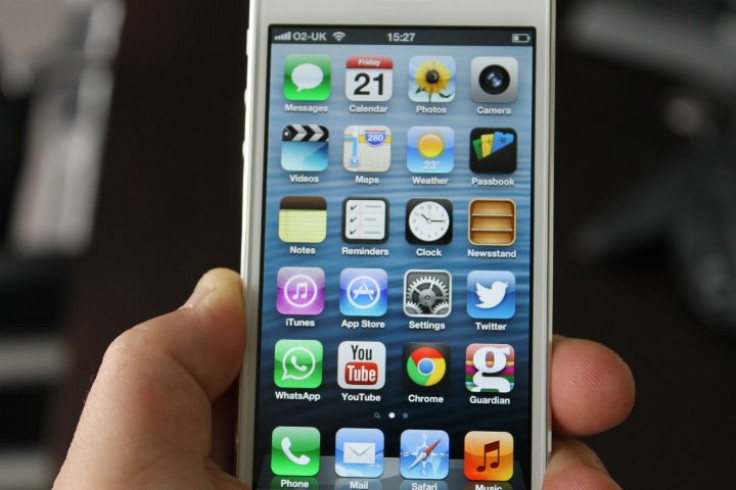
And you notice the difference straight away. While it might seem odd to say it, you do actually feel closer to what is on the screen, and the responsiveness is simply sensational. Nokia claims the screen on its new Lumia 920 features "super sensitive" touch technology, but until we get a chance to try it out for ourselves, the iPhone 5 has set a new standard.
iPhone 5: Hardware
Powering this bigger screen is a completely new chip. The A6 chip is the first to be designed from the ground up by Apple itself, making the hardware/software integration even more tight - though it still needs Samsung to build them.
Apple claims that the A6 chip offers twice the processing power and twice the graphical power of the A5 chip which powered the iPhone 4S. This has been backed-up by benchmark tests carried out by various websites, including AnandTech.
As usual Apple has not revealed the clock speed of the processor, how many cores it has or how much RAM it uses, but thanks to the guys at iFixit, we know the chip is paired with 1GB of RAM with is up from 512MB on the iPhone 4S.
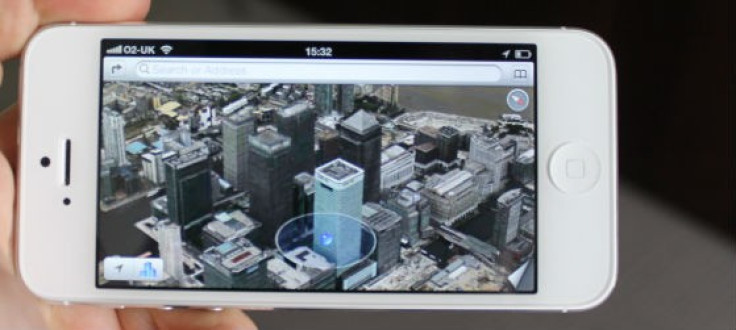
The iPhone 5 in use is as nippy and fast as you would expect with the performance boost offered by the A6 chip. Apps open and close quickly - even when a number of them are running at the same time. 3D gaming is no problem and HD video playback was flawless.
The other significant advantage of the A6 chip, according to Apple, is that, in combination with iOS 6 it is "extremely power efficient." Apple promises eights hours of browsing using 4G, eight hours of talktime or 10 hours of video playback.
The 1440mAh battery is only slightly bigger than the 1432mAh one seen in the iPhone 4S, but considering the larger screen it has to power, we expected battery life to suffer.
However, it doesn't. Battery life is roughly on a par with that of the iPhone 4S meaning a full charge will give you a day of average use, including making and taking calls, browsing the net and playing some games.
While not revolutionary, Apple has done well to maintain battery life in a slimmer frame and with a larger screen to power.
One issue still to be answered is how it will perform when it is able to connect to EE's 4G network when it launched next month. We will of course update the review once the LTE network goes live in the UK.
As we said smartphones are no longer just call making and taking devices, but they still need to perform this core task. Apple has redesigned its microphone layout in the iPhone 5, with three positioned on the bottom, front and rear of the phone. This is designed to almost eliminate background noise, and in our tests, those we were talking to reported clerarer results than with an iPhone 4S in similar situations.
iPhone 5: Connectivity
Speaking of LTE, it is, along with the larger, thinner screen and slimmed down body, one of the most important updates Apple has made.
Thanks to Qualcomm's MDM9615M chip, the new iPhone supports five LTE bands, including, crucially for UK users, the 1800Mhz frequency which EE's new 4G network will run on.
Of course the iPhone 5 supports 3G networks including HSPA, HSPA+ and DC-HSDPA technologies. It also supports Bluetooth 4.0 and dual-band Wi-Fi N, which promises to support speeds up to 150Mbps - but if you find speeds like that, then you're probably in South Korea.
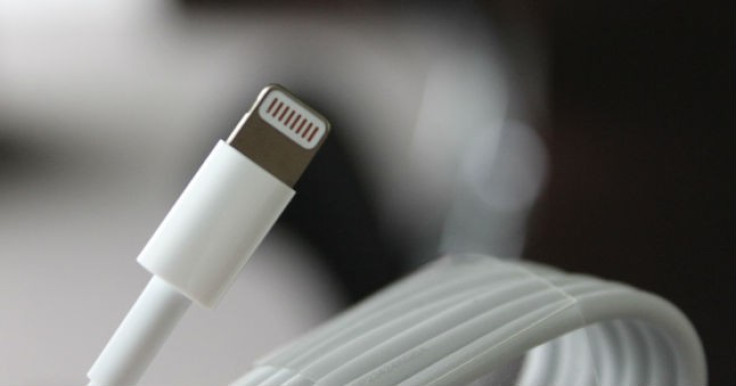
The other major change to connectivity is, of course, the much talked-about Lightning connector on the bottom of the phone. This replaces the 30-pin dock connector which has been in use since 2003, and while a lot of users have complained about having to replace all their accessories, the change was necessary.
As well allowing the phone to be thinner, the new 8-pin Lightning connector is all digital, reversible, and a lot studier than the previous connector.
The Lightning connector is basically a redesigned USB 2.0 port and as such can be used for charging as well as syncing content and data, and outputting video and audio - but just don't expect a transfer speed upgrade.
The final change made in terms of connectivity is to the SIM card. while the side loading tray remains, it is not on the opposite side and is a lot smaller thanks to the implementaiton of the nano SIM by Apple. Along with the Lightning connector, this reduction in size allowed Apple to reduce the overall thickness of the iPhone 5.
iPhone 4: Camera
The iPhone 5's 8 megapixel iSight camera has seen some minor upgrades compared to its predecessors. It retains the same sensor size but image capture is 40 percent faster according to Apple. Apple has also replaced the glass lens cover with a saphire crystal one, which is a lot more scratch resistant.
We found the image capture to be fast but the claimed 40 percent seems to be a bit much.
As with the iPhone 4S, the images captured on the iPhone 5 are superb. They are clear, crisp and colour reproduction is excellent, and slighty better than the over-saturated colours seen on the iPhone 4S.
The one major change with the camera has taken place within the software. Apple has added a Panorama option - something which has been available on Android smartphones for some time now.
Apple's solution works well with on-screen instructions guiding you to move the camera from left to right to capture a range of images, which are then stitched together to create an image which is up to 28 megapixels in size (see sample below).

Yes it's nice to have the option of a panorama mode, but this is far from ground-breaking from Apple.
Moving onto the video capture, Apple has improved image stabilisation which shows in the results but otherwise it remains on a par with the iPhone 4S. On the front Apple has upgraded its FaceTime camera to HD, meaning FaceTime and Skype calls show be a lot better for those on the other end.
iPhone 5: EarPods
The white headphones Apple bundles with its iPhones and iPods may well be iconic - remember those old iPod TV adverts? - but when it came to sound quality they left much to be desired.
Weak bass, a generic fit that was uncomfy after time and chronic sound leak that meant whatever you listened to could be heard by everyone nearby added up to a poor pair of headphones.
Apple realised this, and has introduced the EarPods. Bundled with the iPhone 5 and new range of iPods (they also sell for £25 on their own), the EarPods are shaped to fit more comfortably in your ears and offer better sound.
The unique shape is designed to fit more snugly and to direct the sound more accurately into your ear, resulting in improved sound and less leaking.
In testing we found these claims to be mostly true; the EarPods are more comfortable than the old Apple headphones, although of course your mileage may vary - just because we found them to fit better doesn't mean they will be a perfect fit for everyone.
As for the sound they produce, there is definitely more bass - but not to the extent that it becomes overwhelming - and the wide range of music we tested the EarPods with sounded warmer and rounded than the tinny and abrasive sound of the old headphones.
Apple has also updated the mic and music control buttons. The buttons are now much larger than before and travel further when clicked, making double- or triple-clicks easier, and the volume up/down buttons are raised so that controlling music without looking is easy.
There's no doubt that Apple has improved its bundled headphones, but they are still by no means a great product and, while they are acceptable when included with the phone, we wouldn't recommend buying them for £25.
Sennheiser and others offer much better headphones with mics and music controls for the same price.
iPhone 5: iOS 6
We have a full review of iOS 6 here, and the iPhone 5 makes use of all the features which the updated software has to offer. iOS 6 is a very minor update from Apple, and all the good and bad aspects of the OS remain.
The change which has grabbed all the headlines of course is the change from Google Maps to using Apple's own solution. Missing streets, misspelled names and wrongly located businesses have caused a lot of headaches for those upgrading to iOS 6 and on the iPhone 5 it is no different.
There are obviously alternatives, but Apple really does need to work quickly to make sure this doesn't become a major problem for the company.
Another update it to the phone app, which now lets you decline an incoming call with an automated, or custom text message, and set a reminder to call the person back later.
Elsewhere, iOS 6 has deep Twitter and Facebook integration letting you Tweet or Like from pretty much anywhere within the system. The App Store also has had a redesign and includes a Like button which Apple hopes will be more valuable than any number of reviews.
iOS 6 is clean and simple to use if you are used to Apple's mobile devices, but at times it is infuriating and the lack of flexibility will for many remain too much of an issue and see them stick with Android - despite its own associated issues.
iPhone 5: Siri
One of the features of iOS 6 is an updated Siri, but it is only available on the iPhone 4S, iPad 3 and of course the new iPhone.
Siri now works with location-based requests in the UK, as well as answering questions about sports results, restaurants and film reviews. Siri will even open apps, tweet and post to Facebook for you.
A long press of the Home button brings up Siri and while it still has major blind-spots, it is a much better proposition than the first version of Siri we saw last week. Remember the app is still officially in beta.
While using it in public is still something most people (us included) will not be comfortable with, when we did use it, the results were mostly accurate, without the need to repeat ourselves.
The one area we did find problems was finding directions with Siri. Whether this was down to Siri, our pronunciation, the address we were looking for or indeed the lack of information on Apple's new mapping solution is unclear.
iPhone 5: Verdict
The iPhone 5 is a beautiful, stunning piece of industrial design. It is thinner, lighter and larger than previous iPhones. The 4in display may not be able to match the latest Android smartphone in terms of sheer size, but its resolution is still the best available, and the width remaining static means one-handed use is still a possibility.
On first glance, the iPhone 5 looks only a slight evolution of the iPhone 4 and 4S. However, pick it up and you will instantly see that it is a completely different proposition. Add to this 4G LTE, and Apple has produced its most complete smartphone to date.
iOS still has its limitations and the Maps debacle could put some off, but if you are looking for the most complete smartphone on the market, then the iPhone 5 is the answer.
[Alistair Charlton contributed to this review]
Scores:
- Screen 10/10
- Camera 9/10
- Operating system 8/10
- Design 10/10
- Build quality 9/10
- Overall 9/10
The Good:
- Superb screen
- Beautiful design
- Impeccable build quality
- 4G LTE
- Decent battery life
The Bad
- Terrible Maps app
- Not all apps making use of bigger screen
© Copyright IBTimes 2024. All rights reserved.






